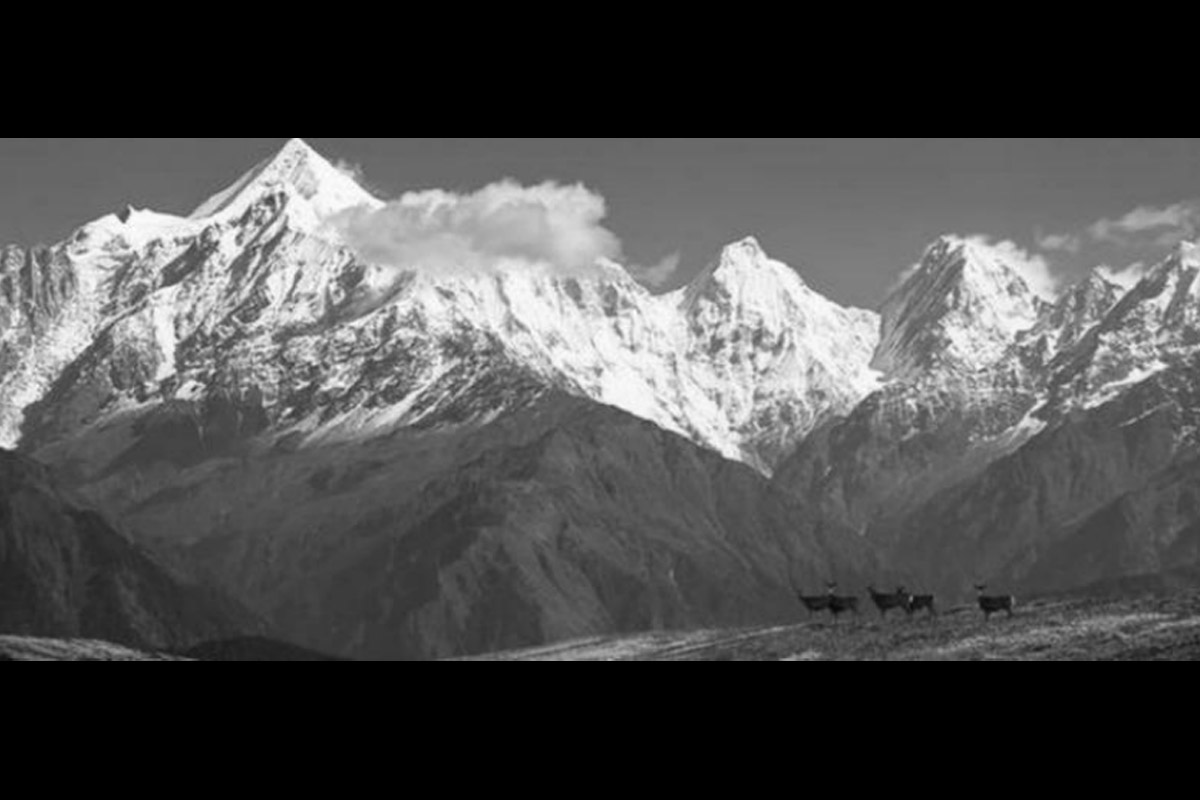Himalayas are young mountains and have the third largest deposit of snow and ice in the world. Due to this, they are often referred to as the third pole of the planet. Having formed relatively recently in the Earth’s geological history, the Himalayas are fragile since they are undergoing the mountain building process. Himalayas are also the point of origin of many Asian rivers, which collectively feed more than 1.3 billion people living in the watershed of the Himalayas.
These rivers are fed by seasonal melting of glaciers, snowfall, rainfall and springwater. In recent decades, global warming has impacted the weather regime which has altered seasonality and flow intensity in these rivers. This is threatening the life and livelihoods of people in the Himalayas and stands to impact more than a billion people across Asia who depend on these rivers. The Inter-Governmental Panel on Climate Change (IPCC) has consistently warned that climate change is intensifying the hydrological cycle. This means more intense rainfall which is associated with flooding, and more intense heat resulting in heat waves and drought. Recent studies have predicted that climate change will result in excess flow of water in the Himalayan Rivers during the ongoing first half of the twenty first century. Post-2050, Himalayan Rivers are projected to have below normal river runoff. There is thus a dire need for preparing the Himalayan Rivers to carry additional water. Flood mitigation measures are needed to be deployed and flood related disaster risk reduction should be the focus of all climate change action planning in the vicinity of the Himalayas.
The recent flood disasters in North India, especially in the states of Himachal Pradesh, Uttarakhand and Delhi have brought to limelight another critical challenge impacting the Himalayan Rivers. Rampant construction of buildings and other infrastructure in the catchment, and destruction of river floodplains in the downstream region are causing irreparable damage to the river ecosystem. Himalayan states like Himachal Pradesh and Uttarakhand are witnessing large-scale migration from villages to hill towns and cities. This has increased the population pressure due to large-scale growth in urban infrastructure in the Himalayas. As a result, forests are sometimes cleared, and catchments of rivers are destroyed thereby severely impacting the hydrology of the Himalayan region.
Tourism is an important sector in the Himalayas and is a key driving force behind this rural-urban migration. Construction of tourism boosting infrastructure like hotels, resorts, parking facilities and wider roads has played its part in damaging the hydrology of the Himalayas. Ecologically sensitive areas are often overlooked and built upon to meet the infrastructure demands of the tourism sector. There is usually no public hearing or consensus during such construction activities and local water sources are often destroyed. Incorporating community knowledge of channels and waterways can help ensure long-term water security of emerging hill towns and cities. Tourism further threatens Himalayan Rivers by inflating the water demand.
This creates a water crisis like situation which inturn affects tourism itself. In June 2018, the queen of hill stations, Shimla, faced a severe water scarcity problem and locals pleaded with tourists on social media to not visit Shimla. The fragile geology of the Himalayas, climate change and unplanned growth of hill towns and cities are thus key factors behind Himalayan water woes. It is important to address these factors for safeguarding life, livelihoods and the ecology of the Himalayan ecosystem. All infrastructure development projects in the Himalayas must undergo detailed scrutiny for feasibility and safety.
The municipalities in the Himalayan states need to play a more proactive role while granting approval to buildings; building bye laws need to be updated to overcome the emerging challenges of climate change. Disaster management departments need to reorient their approach and focus on flood prevention & preparedness. According to the United Nations Disaster Risk Recovery office, every dollar spent in disaster risk reduction saves up to $15 in post-disaster recovery. Himalayas are the not just the source of water but also provide non fossil fuels-based energy security.
Hydroelectric projects in the Himalayas need to introduce additional measures in the wake of recent floods. Upgrading existing dams to improve their structural stability and regular monitoring after flooding events should be prioritized. Schemes for promoting series of micro-hydro projects on Himalayan Rivers, including in the downstream of big dams, can help check flooding and prevent flash floods. Creating localized early warning systems and setting up community-based flood management organisations are the need of the hour in the Himalayas.
Climate change impacts are increasing every year which is a cause for worry. It is time to deploy holistic and multidisciplinary strategies that can prevent unsustainable growth and allow only sustainable development of the Himalayas.
This requires collaborative efforts between governments, local communities and NGOs towards building resilience of this ecologically sensitive region. Safeguarding the Himalayan waterways is the only way to ensure prosperity and well-being of current and future generations.
(The writer is associate professor at Jindal School of Environment & Sustainability, O.P. Jindal Global University, Haryana, India.)












